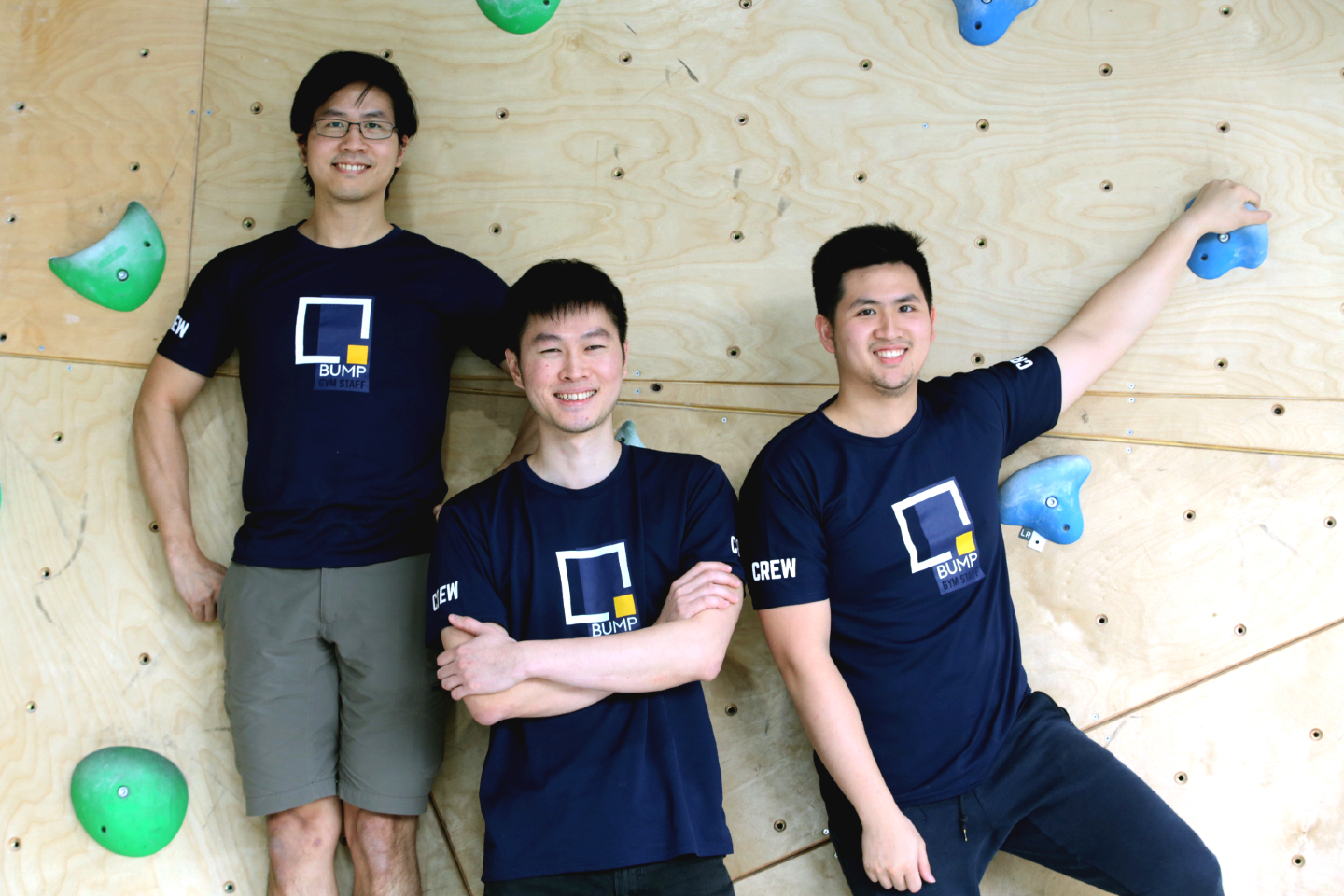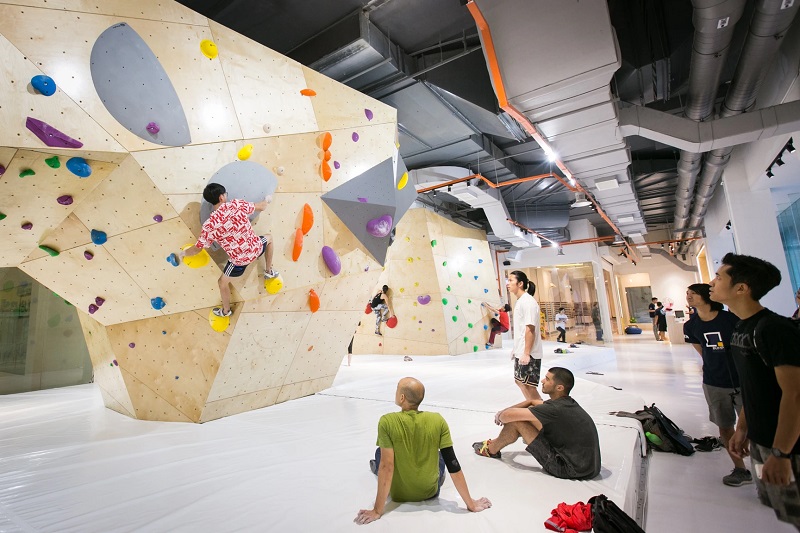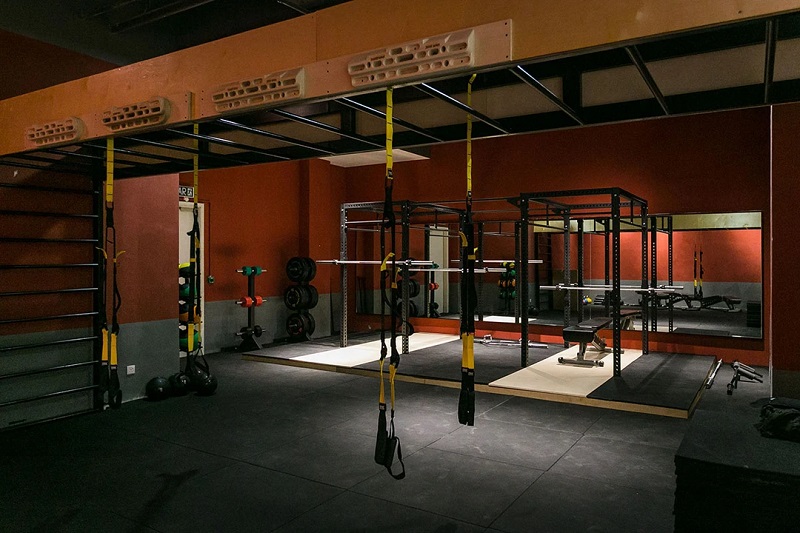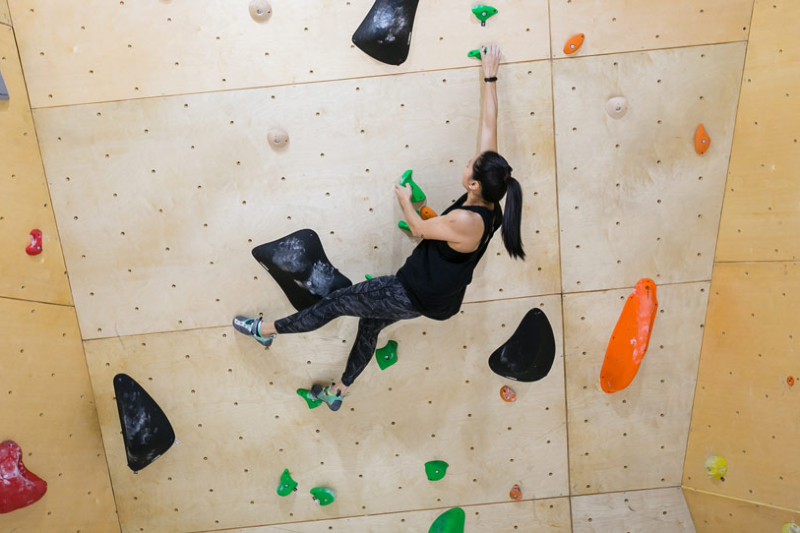
Chang, Tan and Lim co-founded Bump Bouldering in 2018 on a shared love for the sport (Photo: Sam Fong/The Edge)
Sport is a terrific equaliser. If you discount variables like training, it does not discriminate between a child and a CEO, which can be a humbling experience for the latter. Nonetheless, that has not stopped numerous C-suite executives from pursuing one of the most popular indoor sports today, alongside participants of all ages and skill levels: bouldering.
“People think climbing is a very physical sport and that you need to be able to do 100 pull-ups or lift a car to climb,” says Daniel Lim. “We have a friend who can only do a single pull-up but climbs at a higher grade than our much-fitter friends.”
“It is a skill-based sport,” pipes in Benedict Tan. “There’s a lot of nuance to every motion and there are ways to tackle a problem without exerting yourself very much. Strength matters, of course, but you can only apply as much strength as you have technique. It’s about feeling how you are supposed to move your mass from one point of contact to another, like transferring weight from one foot to another to step forward, rather than dragging a leg ahead.”
bb_jaya_one.jpg

“In fact, 40% of our climbers are female and they’re more attuned to how the body moves than males are,” says Chang Zhao Hong. “It’s funny to watch a couple climb together for the first time. The male usually climbs the first section well but tires out quickly, while the female climber is more analytical. She knows she doesn’t have the same strength as her companion, but lasts longer because she’s more aware of her restrictions and doesn’t allow her ego to get in the way.”
The trio know of what they speak as co-founders of Bump Bouldering, a premier bouldering gym at The School in Jaya One, Petaling Jaya. Throughout our interview, climbers are seen tackling the plastic handholds on low artificial boulders that stretch across the entire space above a well-padded floor. Access to the gym is RM32 per day or RM155 per month, inclusive of use of on-site facilities such as the showers and café.
“I was a very competitive athlete; I did taekwondo and basketball,” says Zhao. “I went to check out Camp5 Climbing Gym at 1 Utama Shopping Centre, PJ, in 2007. Since I was light and had decent strength, I could progress fast and train alone on the auto-wall. I had a high pain tolerance, so I didn’t mind the ripped skin. I had a lot of fun.”
bb_gym.jpg

That was where he met Tan in 2009. Tan had encountered climbing as a university student in London and enjoyed the lifestyle around it. The two clicked immediately and realised they could pool their collective climbing experience to offer a superior product — “No disrespect to anyone,” adds Zhao. In the process, they met Lim.
“I wasn’t sporty,” says Lim. “I took up climbing to help me recover from medical depression. I was quite overweight and scared of heights, but climbing has benefited me, and countless others in similar situations, physically and mentally.”
Bump is the largest indoor bouldering gym in Malaysia. The gym circumvents the restrictions of outdoor bouldering — temperamental weather and natural rock formations that change slowly over time — by employing a world-travelling chief route-setter and inviting guest setters to keep things fresh.
A form of rock climbing, bouldering was once viewed as a warm-up activity, but has since evolved into a niche sport performed on small rock formations or artificial rock walls without the aid of harnesses or ropes. This makes it more accessible than rock climbing as it requires just a pair of shoes and an optional chalk bag to keep hands dry and grip firm to get going.
bb_jo.jpg

“You don’t have to climb through so many loops or safety levels just to start,” says Tan. “There are mats everywhere here; you just need to know how to fall correctly. The potential danger makes people more cautious. The more you focus on staying safe, the safer you are. It’s when people are desensitised to danger that they behave dangerously.”
“Statistically, it’s safer to climb than to cross a Malaysian road for that exact reason,” quips Zhao. “Climbing used to be deemed an extreme sport, but is now the fastest-growing urban sport in the world.”
One of bouldering’s biggest draws might be its narrative of self-improvement and Bump acknowledges this. While the staff keep an eye on climbers at all times, they are respectful about when to step in.
“When we see someone struggle, we allow them to struggle a little more, as long as it’s safe, because there’s a greater sense of pride and achievement in solving something yourself,” says Lim. “We identify those who prefer guidance and help where we can. Our youngest climber is an eight-year-old [those below age 12 require a parent or guardian to climb with them] and I’ve seen an 80-year-old tackle a wall, so we don’t see the need to impose age limits here. Anyone can take this up.”
“You’re not fighting against anyone on a boulder — it’s between you, the handholds and the next move,” says Tan. “That resonates with every climber.”: “Wildlife populations are half the size they were just 50 years ago, and their habitats and ecosystems are destroyed at an unprecedented rate, owing to human activity. The Lion’s Share is an idea that is as innovative as it is simple — and it makes a real impact on wildlife conservation.”
This article first appeared on Feb 17, 2020 in The Edge Malaysia.


